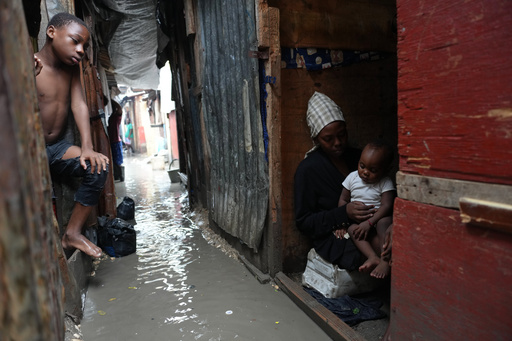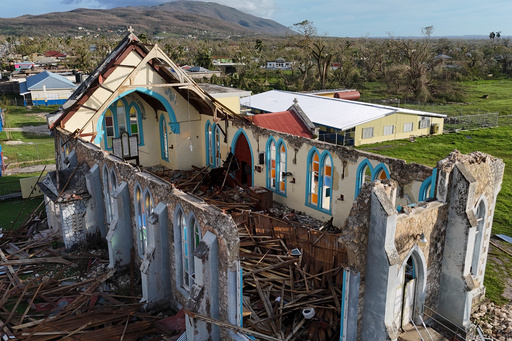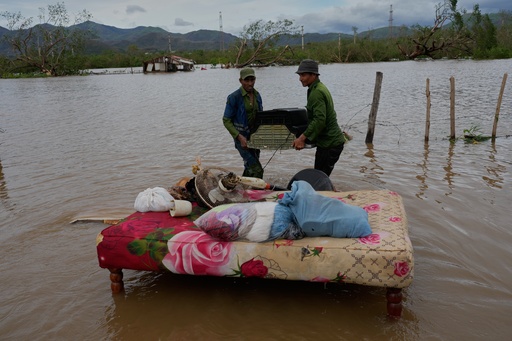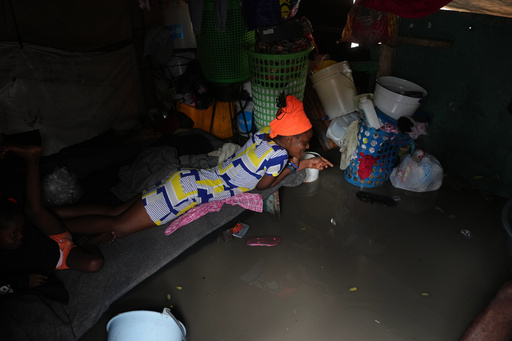Haiti, Jamaica and Cuba pick up the pieces after Melissa's destruction
News > Politics & Government News

Audio By Carbonatix
12:37 AM on Thursday, October 30
By ARIEL FERNÁNDEZ, ANDREA RODRÍGUEZ, JOHN MYERS JR.
SANTIAGO DE CUBA, Cuba (AP) — People across the northern Caribbean were digging out from the destruction of Hurricane Melissa on Thursday as deaths from the catastrophic storm climbed.
The rumble of large machinery, whine of chainsaws and chopping of machetes echoed throughout southeast Jamaica as government workers and residents began clearing roads in a push to reach isolated communities that sustained a direct hit from one of the most powerful Atlantic storms on record.
Stunned residents wandered about, some staring at their roofless homes and waterlogged belongings strewn around them.
"I don’t have a house now,” said a distressed Sylvester Guthrie, a resident of Lacovia in the southern parish of St. Elizabeth, as he held onto his bicycle, the only possession of value left after the storm.
“I have land in another location that I can build back but I am going to need help,” the sanitation worker pleaded.
Emergency relief flights began landing at Jamaica’s main international airport, which reopened late Wednesday, as crews distributed water, food and other basic supplies.
“The devastation is enormous,” Jamaican Transportation Minister Daryl Vaz said.
Some Jamaicans wondered where they would live.
“I am now homeless, but I have to be hopeful because I have life,” said Sheryl Smith, who lost the roof of her home.
Authorities said they have found at least four bodies in southwest Jamaica.
Prime Minister Andrew Holness said up to 90% of roofs in the southwest coastal community of Black River were destroyed.
“Black River is what you would describe as ground zero,” he said. “The people are still coming to grips with the destruction.”
More than 25,000 people remained crowded into shelters across the western half of Jamaica, with 77% of the island without power.
Melissa also unleashed catastrophic flooding in Haiti, where at least 25 people were reported killed and 18 others missing, mostly in the country’s southern region.
Steven Guadard, who lives in Petit-Goâve, said Melissa killed his entire family.
“I had four children at home: a 1-month-old baby, a 7-year-old, an 8-year-old and another who was about to turn 4,” he said.
Haiti’s Civil Protection Agency said Hurricane Melissa killed at least 20 people in Petit-Goâve, including 10 children. It also damaged more than 160 homes and destroyed 80 others.
Officials warned that 152 disabled people in Haiti’s southern region required emergency food assistance. More than 11,600 people remained sheltered in Haiti because of the storm.
Meanwhile, in Cuba, people began to clear blocked roads and highways with heavy equipment and even enlisted the help of the military, which rescued people trapped in isolated communities and at risk from landslides.
No fatalities were reported after the Civil Defense evacuated more than 735,000 people across eastern Cuba. They slowly were starting to return home.
“We are cleaning the streets, clearing the way,” said Yaima Almenares, a physical education teacher from the city of Santiago, as she and other neighbors swept branches and debris from sidewalks and avenues, cutting down fallen tree trunks and removing accumulated trash.
In the more rural areas outside the city of Santiago de Cuba, water remained accumulated in vulnerable homes on Wednesday night as residents returned from their shelters to save beds, mattresses, chairs, tables and fans they had elevated ahead of the storm.
A televised Civil Defense meeting chaired by President Miguel Díaz-Canel did not provide an official estimate of the damage. However, officials from the affected provinces — Santiago, Granma, Holguín, Guantánamo, and Las Tunas — reported losses of roofs, power lines, fiber optic telecommunications cables, cut roads, isolated communities and losses of banana, cassava and coffee plantations.
Officials said the rains were beneficial for the reservoirs and for easing a severe drought in eastern Cuba.
Many communities were still without electricity, internet and telephone service due to downed transformers and power lines.
When Melissa came ashore in Jamaica as a Category 5 hurricane with top winds of 185 mph (295 kph) on Tuesday, it tied strength records for Atlantic hurricanes making landfall, both in wind speed and barometric pressure. It was still a Category 3 hurricane when it made landfall again in eastern Cuba early Wednesday.
A hurricane warning remained in effect early Thursday for the southeastern and central Bahamas and for Bermuda.
Hurricane conditions were expected to continue through the morning in the southeastern Bahamas, where dozens of people were evacuated.
Melissa was a Category 2 storm with top sustained winds near 100 mph (155 kph) early Thursday and was moving north-northeast at 21 mph (33 kph) according to the U.S. National Hurricane Center in Miami.
The hurricane was centered about 145 miles (235 kilometers) northeast of the central Bahamas and about 755 miles (1,215 kilometers) southwest of Bermuda.
Melissa was forecast to pass near or to the west of Bermuda late Thursday and may strengthen further before weakening Friday.
___
Associated Press reporters Dánica Coto in San Juan, Puerto Rico, and David Constantin in Petit-Goâve, Haiti, contributed to this report.











